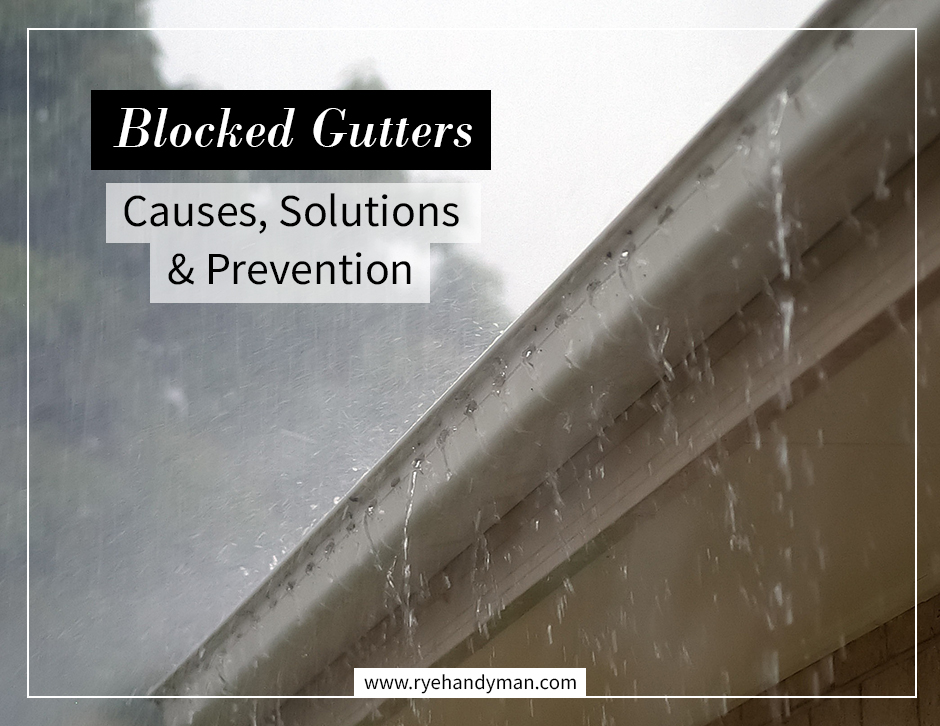
Blocked Gutters – Causes, Solutions & Prevention

No one likes dealing with guttering. Whether it’s the height needed to reach them or the mess that cleaning them out can cause, it’s a lot of effort and most people choose to get a professional in. But it’s always important to be aware of guttering and what issues blockages can cause – rather than putting it off again and again, make sure you catch any potential problems before they’re too far gone.

Causes:
The main cause of gutter issues is going to be blockages, in either the gutter itself or in the downpipes. Anything from debris like fallen leaves, moss twigs etc to dead animals or parts of broken roof tiles will build up and mean the water can’t go where it’s supposed to, so will find alternative ways to escape which can include down the side of the house or over the edge of the gutter. The damage caused by blockages can be further reaching than simply overflowing water.
Soffit and fascia rot – with nowhere to go, the water can gather around the fascia and soffits and over time cause rot.
Roofing damage – flat roofs in particular will suffer when the combined weight of wet leaves and twigs continually press down and create problems. This can also lead to the gutters sagging or pulling away from the property.
Mould – where there is constant moisture, there is the possibility of mould. As this builds up over time it can cause more serious structural problems to the property and be harmful health-wise.
Foundations – when water accumulates around your property foundations it puts it at risk. Erosion weakens your home by slowly removing layer and layer of foundation until it cracks.
Heaving driveway – if you have trees near your driveway and water has remained around your home it can cause a complex root system to grow in areas it shouldn’t, causing hugely extensive and expensive damage to your foundations and driveway.

Solutions:
Clear the gutters of as much debris by hand as you can. By layig a tarpaulin on the ground below, you can throw all the debris onto it and then easil dispose of it once you’ve finished; just remember to move the tarpaulin as you work your way along the length of the gutter.
Once most of it has been removed, use a hose to flush anything left along the gutter and downpipe.
If there are any clogs in the downpipe, aim the hose down and turn up the pressure. If this still doesn’t work, you may need to contact a professional.

Prevention:
To reduce the likelihood of blockages, keep surrounding trees trimmed and away from the roof and gutters as much as possible.
Buy leaf guards and mesh caps for the downpipes.
Regularly check and maintain the gutters to catch any issues before they develop.



